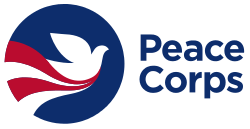 As I said in a blog last year, I don’t come from just a town in Kentucky; I come from a community. It’s not always cohesive, there are conflicts (thankfully, mostly unarmed), not everyone likes each other, but it’s a community: people there have common experiences and common values, across economic and education levels, even if they don’t have the same religion or political beliefs. In addition to the local newspaper, one of the things that has helped to build this sense of community in my hometown is the local radio station, WSON. For many residents, listening in the morning to WSON is a non-negotiable morning ritual. Listeners hear about school sporting events, obituaries and funeral notices, farm reports, information on community arts events, information on events at the local community college, and interviews with candidates for local office. In the evenings, high school basketball games – boys and girls – or baseball or football games are broadcast live. You can see their program lineup here.
As I said in a blog last year, I don’t come from just a town in Kentucky; I come from a community. It’s not always cohesive, there are conflicts (thankfully, mostly unarmed), not everyone likes each other, but it’s a community: people there have common experiences and common values, across economic and education levels, even if they don’t have the same religion or political beliefs. In addition to the local newspaper, one of the things that has helped to build this sense of community in my hometown is the local radio station, WSON. For many residents, listening in the morning to WSON is a non-negotiable morning ritual. Listeners hear about school sporting events, obituaries and funeral notices, farm reports, information on community arts events, information on events at the local community college, and interviews with candidates for local office. In the evenings, high school basketball games – boys and girls – or baseball or football games are broadcast live. You can see their program lineup here.
As a result, even if you don’t have children, you care about the schools in the area. You know when friends and co-workers have had a death in the family. You have opinions about local elections or local bond issues coming up and you’re more likely to vote. I haven’t lived in Henderson since I was 18, yet, anytime I go back, I listen to WSON in the mornings, because I know my family will be talking about what they heard later in the day. It’s hilarious to see my sister’s Facebook posts when she’s listening to a high school sports event on WSON, posting her pleas to the Interwebs for the team to do better, or her congrats for the team doing well.
Now, I live thousands of miles away, in a city in Oregon that’s just about the same size as where I’m from, but there’s no community radio station, commercial or nonprofit. The local paper is published only twice a week and isn’t read by most residents – I have a lot of thoughts as to why, mostly having to do with the quality of reporting, but I’ll save that for another blog. Most people I talk to here don’t know when there is a local election coming up, let alone who is running or what ordinances they are being asked to consider. Twice I found out a neighbor had died weeks after his or her passing, and I was mortified that I hadn’t offered condolences to the surving spouse at the time. I don’t know when events at the local university are happening, and frequently hear about things I would have loved to have attended.
Facebook helps a little to know what’s going on, but it’s not enough. Even if an organization types its events into the Facebook event feature, and frequently shares that event on their status update, people on Facebook may never see it in their newsfeed, because of the network’s algorithms, which push sponsored content and often hide the content from a user’s friends and from pages that user has liked. Twitter helps only if I happen to be on Twitter at the exact moment a local event is posted – otherwise, I miss the tweet, and the event. I try to remember to visit to various web sites and Facebook communities to see what’s going on, but I often forget. TV? The TV stations here are all based in, or focused on, Portland – they rarely even talk about the state legislature (which is in Salem), let alone something nearby. Public radio? Again, the nearest public radio station is focused on Portland, not any of the cities or towns around it (I love OPB, I really do – but it’s no substitute for a local station).
World Radio Day is February 13. It’s promoted by UNESCO, and it’s an example of how the United Nations and other international development agencies still have a lot of programs that leverage radio to help promote agricultural knowledge, educate communities about HIV/AIDS, keep a community up-to-date about a water and sanitation project that will affect the area, help promote gender equality and opportunities for women, promote inter-cultural understanding and tolerance among different groups in the same area, and on and on. Radio remains a powerful force for human rights and development. Here are examples:
I can listen to the radio for free, and while mowing the lawn, driving in my car, cleaning my house, etc. – I can’t do that with a newspaper or TV. What about a podcast? Well, that could work if you have a fantastic broadband connection – here in my town, most people don’t – or you remember to download the podcast every day, which I’m sure I wouldn’t. As Radio Boise says:
A radio can be found very inexpensively at almost any thrift store, plugged into an electrical outlet, and the sounds of nearby broadcasts come spilling out, instantly available. The internet, a wonderful place, is rarely provided for free and, because our country is so large, it will take a long time to develop a pervasive public wireless network. And mobile is also a reality – but also has a monthly fee for access. Radio can be heard by anyone, even by a kid with a crystal-based home-made radio or like me, with an old stereo receiver that my parents gave me that has a simple bundle of wire shoved into the antenna port, or streaming online in a browser or your mobile phone . . . the root of the broadcast, radio, is a signal sent into the air and received for free…
The internet provides vast means in which you can entertain your ears, most of which at their root are computer programs. When human beings program a show to share on the airwaves, the idea is that a warmth and personality is communicated with awareness of our communities’ nuances that the automated mechanisms cannot provide. That is one definition of community.
Imagine attendance surging at community theater productions and local sports events, imagine donations increasing to local nonprofits. Imagine the local police being able to be interviewed on a local public affairs show and putting to rest rumors that are creating conflict and fear within the community. Imagine local service clubs not having to disband from lack of members, but rather, seeing a surge in membership. Imagine people running for office getting to each make a pitch to listeners. Imagine not finding out your neighbor died two weeks ago because you cheerily asked his wife, “So, how’s your husband!” – imagine, instead, being able to attend the funeral or send flowers.
In my community, in addition to all that desperately-needed local information a local radio station could provide in English, it could provide an hour-long program in Spanish, helping our growing Spanish-speaking population to know about public events and free events at the local library that could help them integrate into our community even more.
This town where I live, right here in the USA, needs a local radio station. And I bet this is true for towns all across this country. When local information disappears, local connections disappear as well. And I think it’s disappearing here – and in communities across this country.
So, now all we need is the space, the equipment, the know-how and the appropriate federal filings. Piece of cake. The Prometheus Radio Project says “Many stations get on the air for under $15,000 and can stay on the air for less than $1,000 per month.” Maybe if I win the lottery…
Also see:
Goodbye newspaper, goodbye community?
My Blogs re: social cohesion, building understanding
 Reddit is USA-based web site for discussions on a huge variety of subjects and for rating web content. And it has a lot of potential as a tool for your program’s volunteer recruitment and awareness-building.
Reddit is USA-based web site for discussions on a huge variety of subjects and for rating web content. And it has a lot of potential as a tool for your program’s volunteer recruitment and awareness-building.





